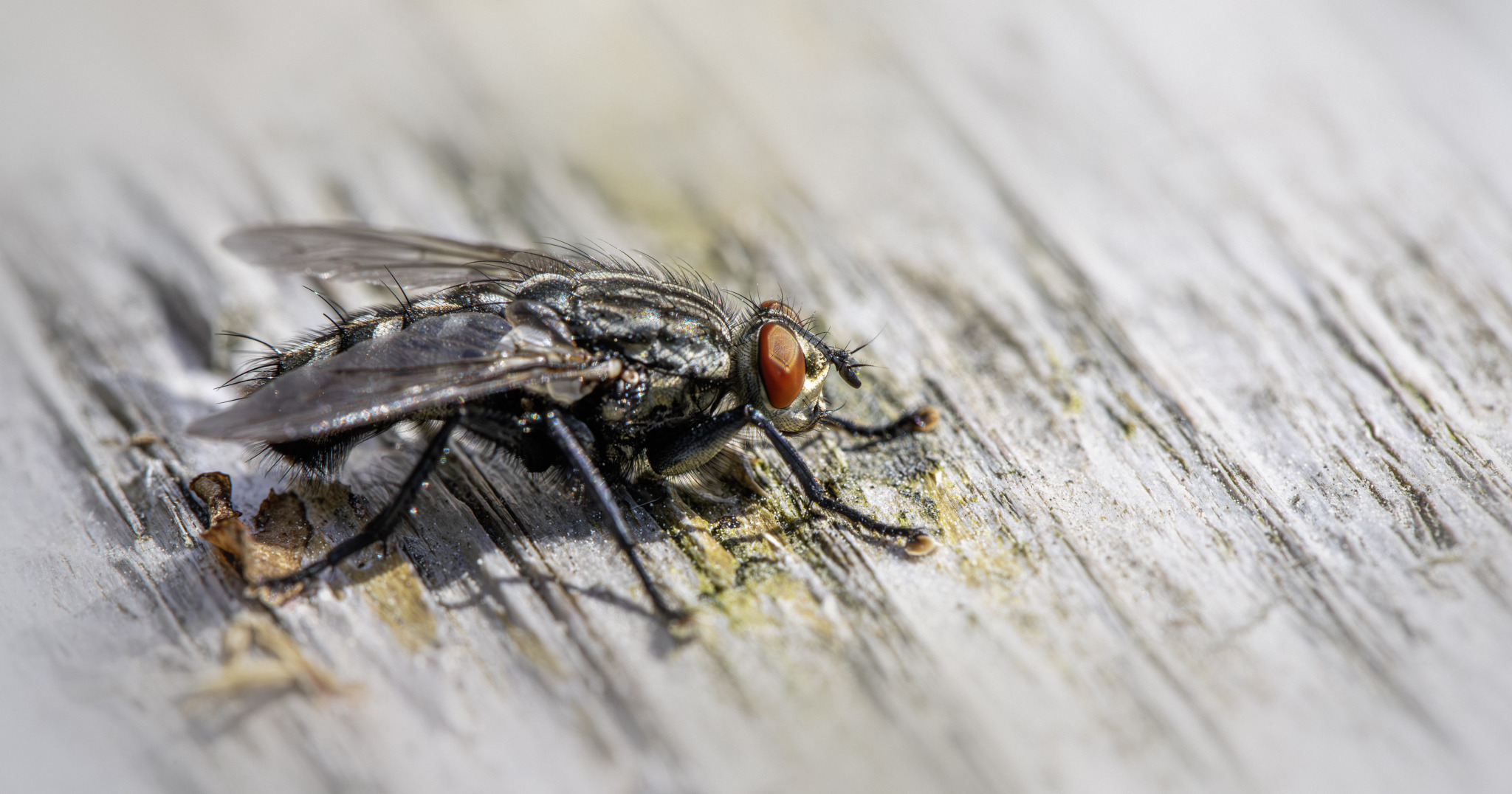The Sarcophaga carnaria, commonly called the flesh fly, is a medium-to-large fly known for its gruesome life cycle, often involving decaying flesh or open wounds. It plays a crucial role in decomposition, ecosystem recycling, and forensic entomology.
🧬 Taxonomy
- Kingdom: Animalia
- Phylum: Arthropoda
- Class: Insecta
- Order: Diptera
- Family: Sarcophagidae
- Genus: Sarcophaga
- Species: S. carnaria
🔍 Physical Characteristics
- Size: 10–14 mm in length (larger than houseflies)
- Color:
- Gray thorax with three distinct black longitudinal stripes
- Checkered abdomen (black and gray patches)
- Red eyes, prominent and rounded
- Wings: Clear with dark veins, rest in a folded roof-like manner
- Mouthparts: Sponging mouthparts—designed for liquids, not biting
🔄 Life Cycle (Ovoviviparous)
Flesh flies are ovoviviparous, meaning the female gives birth to live larvae, not eggs—this gives their young a head start on decomposing material.
🟥 1. Larviposition
- Female lays live maggots directly onto carrion, dung, or open wounds
- Larvae immediately begin feeding
🟧 2. Larval Stage (Maggots)
- Duration: 3–5 days (depending on temperature)
- Diet: Rotting meat, dead animals, feces
- Grow rapidly, shedding their skin twice
🟨 3. Pupal Stage
- Maggots burrow into soil or secluded spots
- Pupate in a hard brown case for 1–2 weeks
🟩 4. Adult Emergence
- Fully formed adult breaks out and begins searching for food and mates
- Adults can live several weeks, feeding on nectar, decaying matter, or open wounds
⏱️ Full cycle duration: 10–25 days depending on climate
🌍 Habitat & Range
- Distribution: Widespread across Europe, especially common in temperate climates
- Habitat:
- Near farms, forests, gardens, and urban areas
- Often found on dead animals, garbage, and feces
- Enters homes occasionally during summer months
🧠 Behavior & Ecology
- Reproduction: Females can produce hundreds of larvae over their lifespan
- Feeding:
- Adults feed on sugary substances (nectar, overripe fruit)
- Larvae specialize in decaying animal matter
- Role in Nature:
- Accelerate decomposition
- Help recycle nutrients into the soil
- Compete with other scavengers like blowflies and beetles
🧬 Forensic Importance
- One of the first flies to colonize decomposing remains
- Helps forensic scientists estimate post-mortem interval (PMI)
- The development stage of larvae can reveal time since death in crime scene investigations
- Often arrives slightly after blowflies (Calliphoridae)
⚠️ Medical & Veterinary Relevance
- Not a direct threat to humans, but:
- Can transmit bacteria by walking on open wounds or food
- Sometimes implicated in myiasis (parasitic larval infection), especially in animals
- Known to target wounds and soiled wool on sheep (a form of flystrike)
🆚 Comparison: Flesh Fly vs. Blowfly
| Feature | Flesh Fly (S. carnaria) | Blowfly (Calliphora spp.) |
|---|---|---|
| Larvae born as… | Live maggots | Eggs |
| Color pattern | Gray with black stripes | Metallic blue/green sheen |
| Arrival on carrion | Slightly after blowflies | Among the first to arrive |
| Forensic use | Yes | Yes |
| Typical size | 10–14 mm | 8–12 mm |
📌 Field ID Tips
- Found hovering near roadkill, compost, carcasses, trash
- Look for:
- Gray-and-black checkered body
- Buzzing, slow-flying behavior
- Often sunbathing on fences, railings, or walls
Visited 35 times, 1 visit(s) today
Views: 510
Subscribe to the newsletter:
